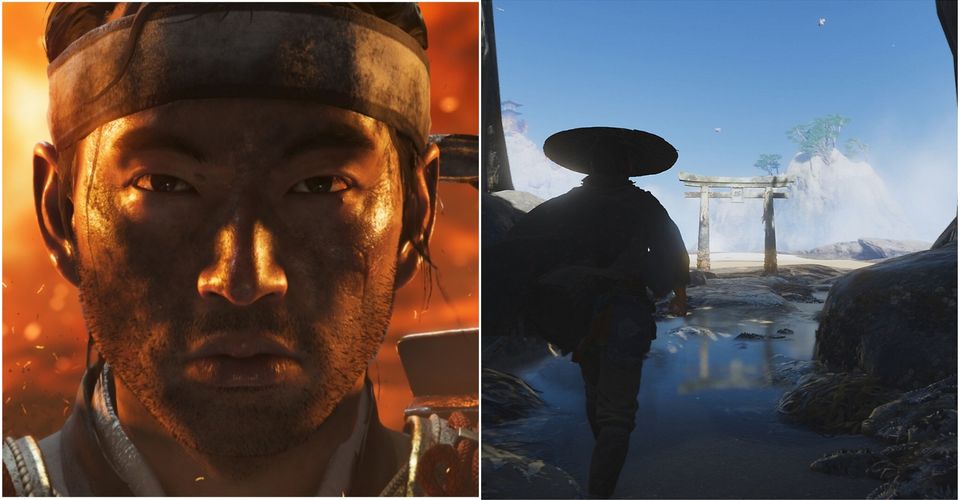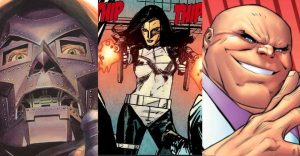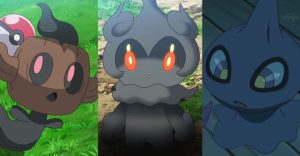Ghost Of Tsushima: The Best And Worst Things About The Game

Considering how influential Samurai movies are in the popular culture of today, from movie franchises like Star Wars and almost every great Western imaginable, it’s surprising how there are so few games that are set during the same time period. Of course, there has been the Nioh series and Sekiro: Shadows Die Twice with their own takes on Medieval Japan. However, both games have a large focus on mythology, magic, and mysticism that don’t really offer its players a real look into a proper historically-set Samurai universe.
Ghost of Tsushima offers gamers a more grounded approach to the legendary Samurai in what is likely the PlayStation 4’s last big-budget exclusive. Let’s take a look at five of the worst and five of the best things about Ghost of Tsushima and see if this stunning open-world Samurai simulator lives up to expectations.
10 Best: The Beautiful World

Ghost of Tsushima is a beautiful experience and it’s not just because of the fantastic motion capture, facial animation, and effects but the stunning art design too. What it lacks in photorealism in comparison to The Last of Us Part 2, it more than makes up for it in visual and cinematic flair.
The diverse environments from the Pampas grass fields, waterfalls to the bamboo forests, Ghost of Tsushima is astonishing to look at. The game’s lighting effects are truly something special at dusk or dawn with its colors effects being comparable to Horizon Zero Dawn.
9 Worst: It Doesn’t Innovate

Ever since the time-hopping Assassin’s Creed series left the setting of 12th Century Jerusalem fans have been hoping for an entry set in Feudal Japan. The Ghost of Tsushima certainly fulfills those dreams in more ways than one.
However, just like Assassin’s Creed series, Ghost Tsushima is guilty of borrowing several ideas and mechanics from other games without ever really doing anything innovative in its own right.
8 Best: It’s As Stylish As It Is Beautiful

In addition to the stunning graphics and its impressive art style, Ghost of Tsushima is as stylistic in its presentation as it is full of substance. The dynamic soundtrack is outstanding, the dramatic standoffs which play out like a Samurai version of Red Dead Redemption’s are a power fantasy come true.
Furthermore, there’s the Kurosawa mode which is designed to replicate the cinematic classics by Akira Kurosawa like the Hidden Fortress and Seven Samurai. The mode changes the color to black and white, adds film grain, and the audio has been adjusted to sound like a film made in the 1950s.
7 Worst: Fairly Shallow Stealth Mechanics

Ghost of Tsushima has two main approaches in its gameplay one is take attack enemies head-on and fight them with honor. The other then is to fight dishonorably and use stealth and Ninja-like tactics to take down the enemy. Unfortunately, the latter is the least interesting approach for the lead character.
While there’s nothing inherently bad about its stealth mechanics, players are unable to hide bodies, the takedowns are fairly simplistic, and once alerted, enemies will give up and revert back to their original state and carry on as if nothing happened after hiding for a short time.
6 Best: The Combat Is Fantastic

It’s true that there is a lot of fighting in Ghost of Tsushima and some repetition along with it. However, when the combat system is this good it never gets to point of feeling tiresome. The combat is so good that it could easily have functioned as a great beat-em-up without the open-world and the narrative.
The fighting system is fluid and mechanically similar to the Batman: Arkham series with a deeper and more satisfying emphasis on parrying and dodging. However, the depth comes from Jin learning different stances so he can adapt to any fighting situation.
5 Worst: It Lacks Replay Value

Sucker Punch’s previous full game effort Infamous: Second Son allowed players to either make heroic or villainous choices which will affect the protagonist’s personality as well as give its players two different endings.
Unfortunately, Ghost Tsushima seems to waste the potential of its own mechanics which center around whether or not the protagonist Jin adheres to some kind of Samurai code. There are no multiple endings or outcomes to support its own themes and narratives which would have added a lot of replay value. Disappointingly, there isn’t even a new game plus mode for those that completed the game.
4 Best: The Gripping Narrative

Ghost of Tsushima has a lot in common with the Assassin’s Creed franchise, but unlike that series, it doesn’t get bogged down with any the excessive exposition of drawn-out cutscenes to tell its tale.
The dialogue and the writing are excellent so the story sequences never feel like they outstay their welcome. The characters are realistic and there’s just enough on offer to keep the narrative moving at an interesting pace.
3 Worst: Predictable Enemy A.I.

As previously mentioned, the stealth mechanics while not at all terrible don’t quite have the depth one would expect from similar games in the genre. Mechanically it’s similar to The Last of Us Part 2 but unlike that game the enemy A.I. can be fairly obtuse by comparison.
The enemies in Ghost of Tsushima also lack the relentlessness of other games that have incorporated stealth. If caught, they won’t hunt Jin down or operate as a unit to find and kill him, they’ll simply shout and throw projectiles at him until enough time or distance has passed to reset to their original alert status.
2 Best: Tales Of Tsushima

As mentioned above, the story in Ghost of Tsushima is a very good one that doesn’t suffer from pacing or too much exposition when it comes to pulling players into its world and history. However, for those that really want to get the best out of the game’s character development should invest their time into the excellent Tales side story content.
The Tales are short stories that help flesh out the game’s world and its characters many of which will offer up lots of surprising twists of their own.
1 Worst: There’s A Lot Of Repetition

Ghost of Tsushima does a great job of blending together lots of great ideas from other open-world games like Assassin’s Creed, Far Cry, and even Red Dead Redemption. Unfortunately, it also has many of the same flaws when it comes to repetition and its mission structure.
Players will definitely find themselves repeating a lot of the same actions over and over again when it comes to completing the side content such as liberating encampments, fighting bosses, and simply heading to the next waypoint to clear out the next area.

















